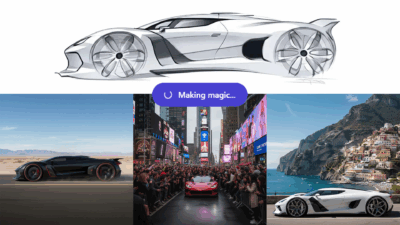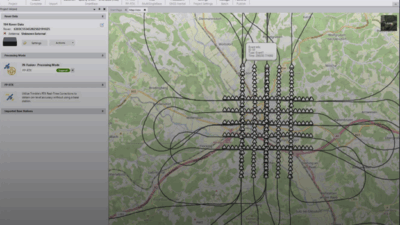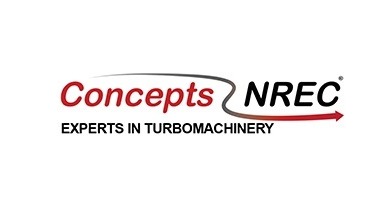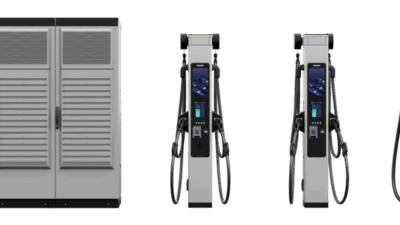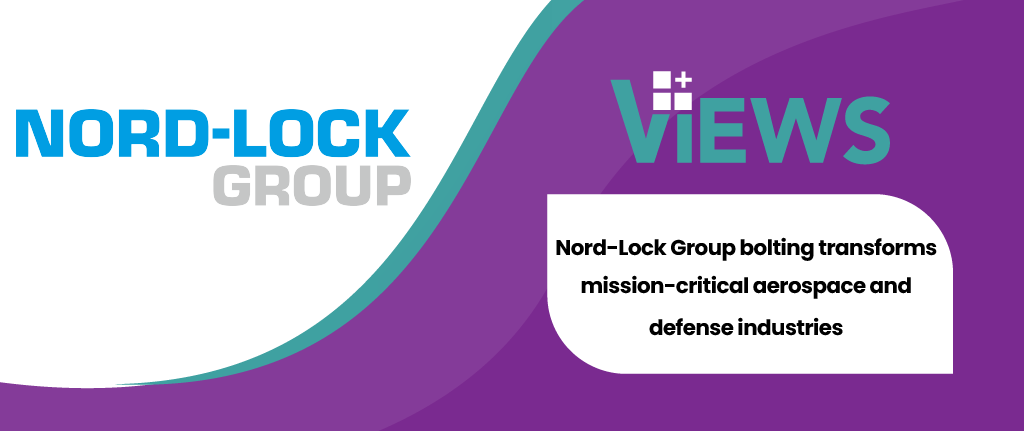
This article is sponsored by Nord-Lock Group. In this VIEWS article, engineering.com spoke with Stephen Busalacchi, Senior Superbolt Product Specialist at Nord-Lock Group to discuss the challenges of bolting in mission-critical aerospace and defense applications, and how safety and reliability depend on the right bolting solution.
From military aircraft to naval vessels, bolted joints are the most critical connections that influence how these complex systems are assembled, maintained, and kept operational over time. In such high-stakes industries failure is never an option.
Even the failure of a single fastener can significantly impact human lives, the reliability of expensive equipment, and national security. Maintaining proper bolt preload under extreme conditions such as vibration, shock, thermal cycling, solar radiation, and corrosion must be a strategic decision.
“There’s no room for error. In aerospace and defense, reliability and safety are of the utmost priority. No one wants to see the loss of an aircraft or a satellite. The stakes are too high, and the ramifications are enormous,” says Stephen Busalacchi, Senior Superbolt Product Specialist at Nord-Lock Group.
However, despite this importance, the role of bolting has been anything but ordinary. Nord-Lock Group takes this challenge seriously, offering a full range of bolting products, including Nord-Lock® Wedge Locking Washers, Superbolt® Multi-Jack Bolt Tensioners, Boltight® Hydraulic Bolt Tensioners, and Expander® System Pivot Pins.
In military and space applications, where systems are often one-off or classified, custom solutions are critical. For example, fasteners for satellites demand specific engineering that is not feasible for mass production. Nord-Lock Group specializes in custom-engineered tensioning and locking solutions designed for unique materials and specific industry preload needs.
What are engineers up against?
With advancements in these mission-critical industries, bolting technology faces ever-increasing demands. Engineers in these fields require fasteners that operate under a range of extreme environmental conditions, from the depths of the ocean to the vacuum of space.
“We work with solar radiation and corrosive marine conditions. We engineer fasteners to handle high loads and stresses using exotic materials, all while meeting some of the most stringent standards in the industry,” says Busalacchi.
Nord-Lock Group addresses these issues through a combination of advanced material science, coating technology, and testing. They use Inconel, Monel, and other exotic alloys, along with lubricants and coatings suitable for specific applications. The company also performs comprehensive finite element analysis (FEA) and joint analysis to validate designs.
There is also an increase in tight spaces and complex geometries in aerospace and defense systems that require custom bolting solutions. Traditional off-the-shelf large bolts have proved inefficient, highlighting a critical demand for more innovative tensioning methods to achieve high preload in cramped spaces.
“Nord-Lock Group takes a consultative approach by partnering with our client’s engineers to understand each application’s needs,” says Bill Slatosky, Head of Sales for the Americas. This includes technical specifications, timelines, and budgets. From there, the company leverages its extensive experience to develop tailored solutions to ensure safety and scalability.
Another key requirement engineers face today is that every component used in the system must meet stringent industry standards. “We comply with many stringent standards such as military and ISO and conduct audits to ensure all our processes and deliverables are fully in-line with requirements. Customers are even welcome to tour our facilities and validate our quality systems,” says Busalacchi.
Impact on mission-critical applications
Nord-Lock Group tensioning systems have delivered real-world results in some of the most demanding applications. A prime example of this comes from the maritime defense, where, after the success of Superbolt in commercial shipyard applications, the U.S. Navy began adopting these Multi-Jackbolt Tensioners to improve maintenance on naval vessels.
“They had Superbolts installed on the propulsion shaft-line couplings, and while the vessel was out at sea, it ran into an issue with the shaft thrust bearing. Because Superbolts were already in place on the shaft couplings, they were able to dismount the coupling, service the bearing, and reassemble everything faster than usual,” Busalacchi emphasizes.
Customers have reported that ergonomics and safety have improved by removing dangerous pinch points, heavy lifting, and high system stress. The Superbolt Multi-Jackbolt Tensioning provides even load distribution, reduces the risk of gasket degradation, leakage, and failure. In the long term, that means fewer unexpected outages and a longer lifespan of equipment.
Nord-Lock Group has also embraced smart bolting solutions. For instance, their Superbolt Load-Sensing Tensioner and Boltight monitoring systems allow engineers to measure bolt preload through built-in sensors with ±5% accuracy. This live load-sensing capability lets maintenance staff monitor bolt tension remotely.
The future of bolting
Bolting has been one of the oldest challenges in engineering, but it’s been evolving at a rapid pace over the past decade. Nord-Lock Group, established in 1982 with the original Wedge-Locking Washer, now offers the most comprehensive range of innovative bolting technologies available in the market, from Superbolt Mechanical Tensioners, Boltight Hydraulic Tensioners, to their smart bolting products like the Superbolt Load-Sensing Tensioner and Flexnut
From off-the-shelf products to custom solutions, engineers have the flexibility to choose the right product for their applications and no longer worry about the potential consequences of equipment failures. Learn more at Nord-Lock Group.
